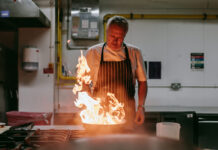Recent figures cast doubt on drink drive and MUP

THE Scottish Government’s legislation on minimum pricing and the drink drive limit has come in for fresh criticism after new studies appeared to call the effectiveness of both policies into question.
A study published this month by the University of Strathclyde claimed that, in the first two years following its introduction, the lower blood alcohol limit “has had little effect on the level of deaths and accidents on the nation’s roads”.
The university’s researchers had studied data on more than 1.1 million accidents, which had led to 1.5 million casualties and over 14,000 fatalities.
The lower drink drive limit has had a well-documented impact on the licensed trade, however.
In early 2015, just months after the legislation was introduced, research from the Scottish Licensed Trade Association found the lower limit had impacted sales in nearly two thirds of Scotland’s pubs.
Licensing lawyer and SLTN columnist Jack Cummins said the research showed the legislation is “not working”.
“We already knew that the lower limit has had a catastrophic impact on the on-trade,” said Cummins.
“Now we know it’s not working. So much for evidence-based legislation.
“Of course, there’s not the slightest chance that the measure will be reversed.
“But there will be winners. With accident and fatality rates more or less equal north and south of the border despite the change, I’d expect the trade in England and Wales to be saved from calls to follow the Scottish move.”
A spokesman for the Scottish Government said: “There is clear evidence that any consumption of alcohol increases the risk of driving.
“The North Report on drink driving found evidence that drivers are six times more likely to die in a road traffic accident with a blood alcohol concentration between 50mg (the new limit) and 80mg (the old limit) than with zero blood alcohol.
“Based on 2012 figures, and by using studies cited in the North Report, we estimate that reducing the drink drive limit in Scotland will save between three and 17 lives each year.”
The drink drive report was followed by separate figures from research company Nielsen, which reported an increase in off-trade alcohol sales in Scotland in the months following the introduction of minimum pricing.
According to the company’s Homescan Consumer Panel research, alcohol sales increased by 14% in value terms – in part driven by a 10% increase in prices – but also by 4% in volume.
The biggest growth was said to be in the flavoured vodka, gin and ready-to-drink categories.
Cider saw the biggest decline, with 34% of cider spend shifting to sparkling wine.
Gemma Cooper, commercial business partner at Nielsen, said sales were likely helped by factors such as the Scottish Cup Final, the World Cup and the warm weather over the summer months.



















